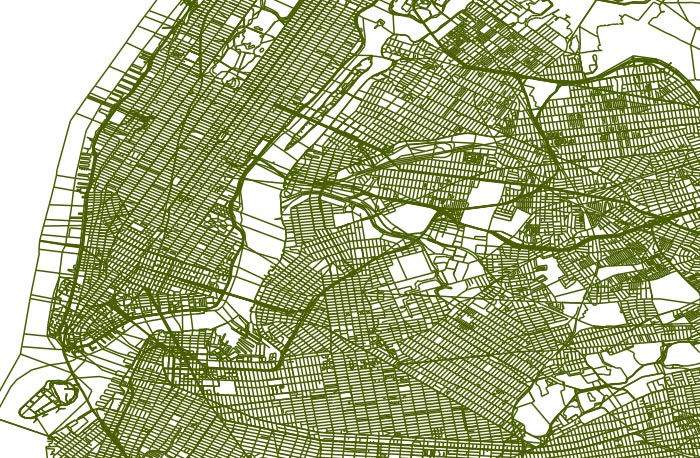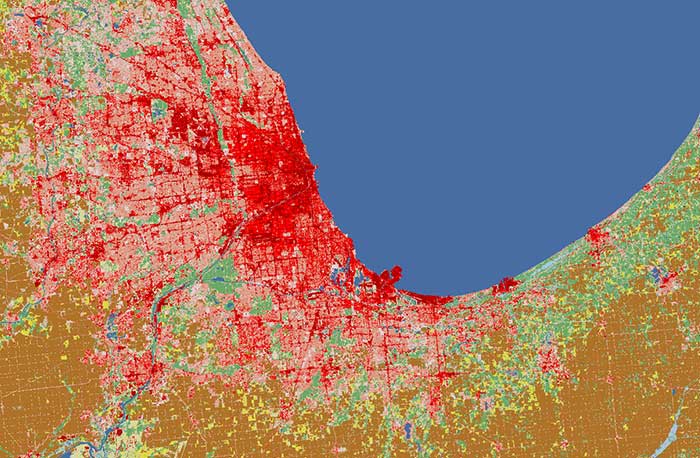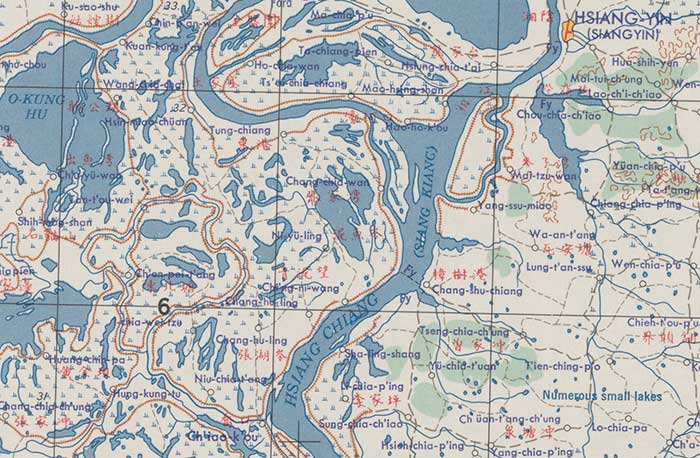View Metadata
Error:
The metadata view for selected schema is not available
<?xml version="1.0"?> <mods xmlns="http://www.loc.gov/mods/v3" xmlns:xsi="http://www.w3.org/2001/XMLSchema-instance" xmlns:rdf="http://www.w3.org/1999/02/22-rdf-syntax-ns#" xmlns:xlink="http://www.w3.org/1999/xlink" version="3.7" xsi:schemaLocation="http://www.loc.gov/mods/v3 http://www.loc.gov/standards/mods/v3/mods-3-7.xsd"> <titleInfo> <title>LandScan Global Population Database 2013</title> </titleInfo> <name type="corporate"> <namePart>Oak Ridge National Laboratory</namePart> <role> <roleTerm authority="marcrelator" type="text">creator</roleTerm> </role> </name> <name type="personal"> <namePart>Bright, Edward A.</namePart> <role> <roleTerm authority="marcrelator" type="text">creator</roleTerm> </role> </name> <name type="personal"> <namePart>Coleman, Phillip R.</namePart> <role> <roleTerm authority="marcrelator" type="text">creator</roleTerm> </role> </name> <name type="personal"> <namePart>Rose, Amy N.</namePart> <role> <roleTerm authority="marcrelator" type="text">creator</roleTerm> </role> </name> <genre valueURI="http://id.loc.gov/authorities/genreForms/gf2011026297" authority="lcgft">Geospatial data</genre> <genre valueURI="http://rdvocab.info/termList/RDAContentType/1001" authority="rdacontent">cartographic dataset</genre> <typeOfResource>cartographic</typeOfResource> <typeOfResource>software, multimedia</typeOfResource> <physicalDescription> <form>Raster Dataset</form> <digitalOrigin>born digital</digitalOrigin> </physicalDescription> <language> <languageTerm authority="iso639-2b" type="code">eng</languageTerm> </language> <abstract lang="eng" displayLabel="Abstract">This raster dataset contains population counts at 30 arc second resolution (1 km. or finer) for 2013. This release represents the fourteenth version of LandScan and succeeds all previous versions. Using an innovative approach with Geographic Information System and Remote Sensing, ORNL's LandScan is the community standard for global population distribution. At approximately 1 km resolution (30" X 30"), LandScan is the finest resolution global population distribution data available and represents an ambient population (average over 24 hours). The LandScan algorithm, an R&amp;D 100 Award Winner, uses spatial data and imagery analysis technologies and a multi-variable dasymetric modeling approach to disaggregate census counts within an administrative boundary. Since no single population distribution model can account for the differences in spatial data availability, quality, scale, and accuracy as well as the differences in cultural settlement practices, There is also a layer file (lspop2012.lyr) for ArcGIS. This dataset is part of the LandScan global 2013.</abstract> <abstract lang="eng" displayLabel="Purpose">Developed for the U. S. Department of Defense. Allows for quick and easy assessment, estimation, and visualization of populations-at-risk.</abstract> <note lang="eng" displayLabel="Preferred citation">Bright, Edward A., Coleman, Phillip R., Rose, Amy N., and Oak Ridge National Laboratory. (2013) LandScan Global Population Database 2013. Oak Ridge National Laboratory, UT-Battelle, LLC.</note> <note displayLabel="Supplemental information">IMPORTANT: For correct population analysis using ESRI products assure that the following parameters are set:- Use ONLY Geographic, WGS84 projection parameters.- Spatial Analysis cell size is 0.008333333333333 (double precision)- Spatial Analysis extent should be set to an exact multiple of the cell size (for example 35.25, 35.50, 35.0)Converting (including on-the-fly projections) a grid to other projections or coordinate systems causes population cells to be re-sampled, and hence population counts will be incorrect.In ESRI ArcMap, load the LandScan grid first in order to maintain the original geographic (lat-lon) projection."The dataset has a spatial resolution of 30 arc-seconds and is output in a geographical coordinate system - World Geodetic System (WGS) 84 datum. The 30 arc-second cell, or 0.008333333 decimal degrees, represents approximately 1 km2 near the equator. Since the data is in a spherical coordinate system, cell width decreases in a relationship that varies with the cosine of the latitude of the cell. Thus a cell at 60 degrees latitude would have a width that is half that of a cell at the equator (cos60 = 0.5). The height of the cells does not vary. The values of the cells are integer population counts, not population density, since the cells vary in size. Population counts are normalized to sum to each sub-national administrative unit estimate. For this reason, projecting the data in a raster format to a different coordinate system (including on-the-fly projections) will result in a re-sampling of the data and the integrity of normalized population counts will be compromised. Also prior to all spatial analysis, users should ensure that extents are set to an exact multiple of the cell size (for example 35.25, 35.50, 35.0) to avoid 'shifting' of the dataset." --from the Oak Ridge National Laboratory LandScan Web site, Sept. 12, 2013.</note> <subject authority="lcsh" lang="eng"> <topic authority="lcsh" authorityURI="http://id.loc.gov/authorities/subjects.html">Population geography</topic> </subject> <subject authority="lcsh" lang="eng"> <topic authority="lcsh" authorityURI="http://id.loc.gov/authorities/subjects.html">Human geography</topic> </subject> <subject authority="lcsh" lang="eng"> <topic authority="lcsh" authorityURI="http://id.loc.gov/authorities/subjects.html">Population</topic> </subject> <subject lang="eng"> <geographic>Earth</geographic> </subject> <subject> <temporal encoding="w3cdtf">2013</temporal> </subject> <subject authority="ISO19115TopicCategory"> <topic authority="ISO19115TopicCategory" authorityURI="http://www.isotc211.org/2005/resources/Codelist/gmxCodelists.xml#MD_TopicCategoryCode" valueURI="imageryBaseMapsEarthCover">Imagery and Base Maps</topic> </subject> <subject authority="ISO19115TopicCategory"> <topic authority="ISO19115TopicCategory" authorityURI="http://www.isotc211.org/2005/resources/Codelist/gmxCodelists.xml#MD_TopicCategoryCode" valueURI="society">Society</topic> </subject> <subject> <cartographics> <scale>Scale not given.</scale> <coordinates>W 180°--E 180°/N 90°--S 90°</coordinates> </cartographics> </subject> <subject displayLabel="WGS84" authority="EPSG" valueURI="http://opengis.net/def/crs/EPSG/0/4326"> <cartographics> <projection>EPSG::4326</projection> </cartographics> </subject> <originInfo> <dateIssued encoding="w3cdtf" keyDate="yes">2013</dateIssued> <dateValid encoding="w3cdtf">2013</dateValid> <place> <placeTerm type="text">Oak Ridge, Tennessee, US</placeTerm> </place> <publisher>Oak Ridge National Laboratory</publisher> <edition>2013</edition> </originInfo> <location> <url usage="primary display">https://purl.stanford.edu/fq429yj8470</url> </location> <recordInfo> <languageOfCataloging> <languageTerm authority="iso639-2b" type="code">eng</languageTerm> </languageOfCataloging> <recordContentSource>Stanford</recordContentSource> <recordOrigin>This record was translated from ISO 19139 to MODS v.3 using an xsl transformation.</recordOrigin> <recordIdentifier>edu.stanford.purl:fq429yj8470</recordIdentifier> </recordInfo> <extension displayLabel="geo"> <rdf:RDF xmlns:gml="http://www.opengis.net/gml/3.2/" xmlns:dc="http://purl.org/dc/elements/1.1/"> <rdf:Description rdf:about="http://purl.stanford.edu/fq429yj8470"> <dc:format>application/x-ogc-aig; format=ArcGRID</dc:format> <dc:type>Dataset#Raster</dc:type> <gml:boundedBy> <gml:Envelope gml:srsName="EPSG:4326"> <gml:lowerCorner>-180.0 -90.0</gml:lowerCorner> <gml:upperCorner>180.0 90.0</gml:upperCorner> </gml:Envelope> </gml:boundedBy> </rdf:Description> </rdf:RDF> </extension> <relatedItem type="host"> <titleInfo> <title>LandScan global 2013</title> </titleInfo> <location> <url>https://purl.stanford.edu/gy826dj4762</url> </location> <typeOfResource collection="yes"/> </relatedItem> <accessCondition type="useAndReproduction">These data are licensed by Stanford Libraries and are available to Stanford University affiliates only. Affiliates are limited to current faculty, staff and students. Non affiliates seeking access should contact the publisher directly. These data may not be reproduced or used for any purpose without permission.</accessCondition> <accessCondition type="copyright">Copyright ownership resides with the originator.</accessCondition> </mods>
The metadata view for selected schema is not available
Please select another metadata view. Alternately, try downloading the file or reaching out to the holding institution.


